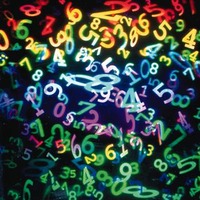I should have talked about our maths programme before at the Multiple Intelligence Centre. In reality it's very exciting for us. It came out of a curriculum workshop that we were doing at MIC and somehow we stumbled through our maths programme.
Focusing on 'backwards design' and 'understanding by design', we suddenly realised that we were taking the logic of our maths curriculum to it's logical extension and suddenly we had a completely new curriculum that not only made sense to us, but we think will make even more sense to our children.
Let's start at the beginning.
I wrote before about the issue of 'backwards design' and 'authentic learning'. In our workshop we were wondering aloud about the authenticity of our modern maths curriculum. Specifically, what actual maths do most of us use when we enter the adult world and with our first set of paying jobs. The list that we came up with were:
- Balancing our home budget
- Going shopping to the market or grocery store
- Conversions (currencies, Fahrenheit to Celsius, mph-kph, etc)
- Calculation areas (home renovations such as painting)
- Understanding percentages (eg interest rates)
Nowhere though did we see the pressing need for:
- Calculus
- Trigonometry
- Advanced Geometry
Of course these topics are important, but we started to wonder how important they are if they're not used in everyday life by most of us. Furthermore, our experience is that the people that actually need these mathematical skills, are normally assumed to know nothing and are started from scratch at tertiary level education anyway.
We also noted that today the school leavers appear to be very shy of using any kind of numeracy in their everyday life. I have honestly been in a shop, where the shop keeper has dialled up 3x$20 (three Tee-shirts), I've given her two $50 notes; she's added those two numbers up; and then taken the total sales away from the total money I gave her to calculate my change …
… except she did this on a calculator!
This has happened more than once.
MIC's New Numeracy Curriculum
So the result of this workshop has been to formulate a maths curriculum that looks more at the way of handling numbers. Specifically quantities, which includes rough by eye, intuitive numeracies as well as more precise quantification. Our children are learning that the value of quantities helps us to make informed decisions, whether we're trading, designing, building or taking a risk. Our children work in length, areas, volumes, as well as fractions and percentages.
In a way, we've come to realise that 'mathematics' is the highly technical side of a broader discipline called 'working with quantities'. For the moment we think the term 'numeracy' tends to encompass that term quite well.
If you'd like to have a look at some bullet point notes of our numeracy curriculum you can download them from here for the primary, and here for the secondary.

